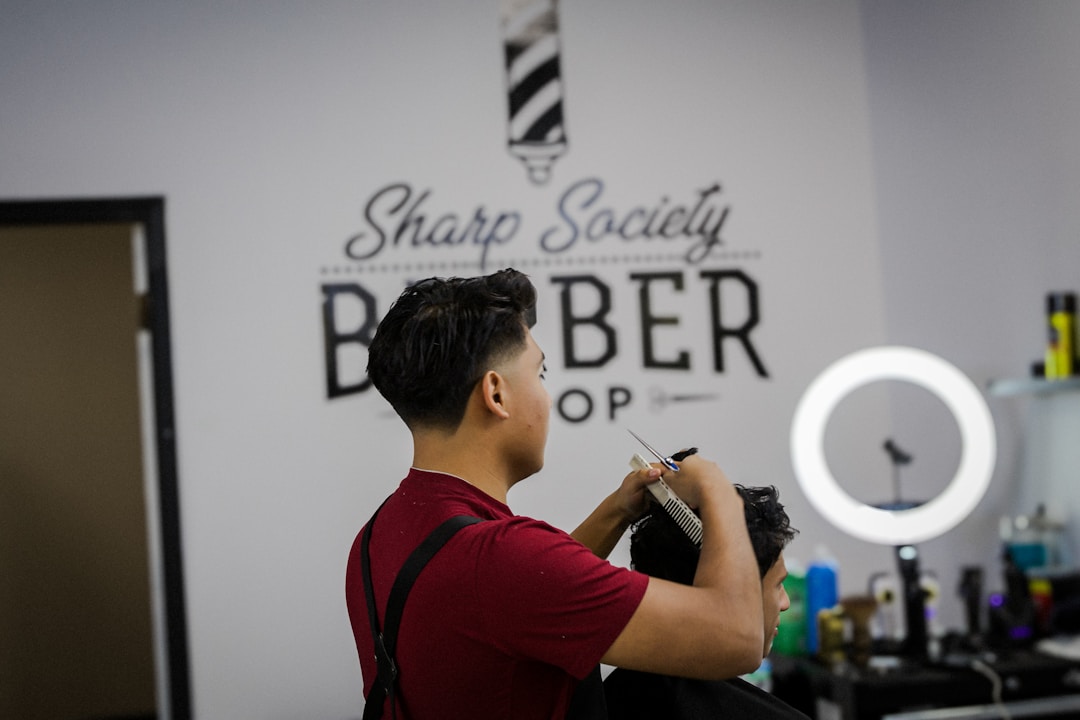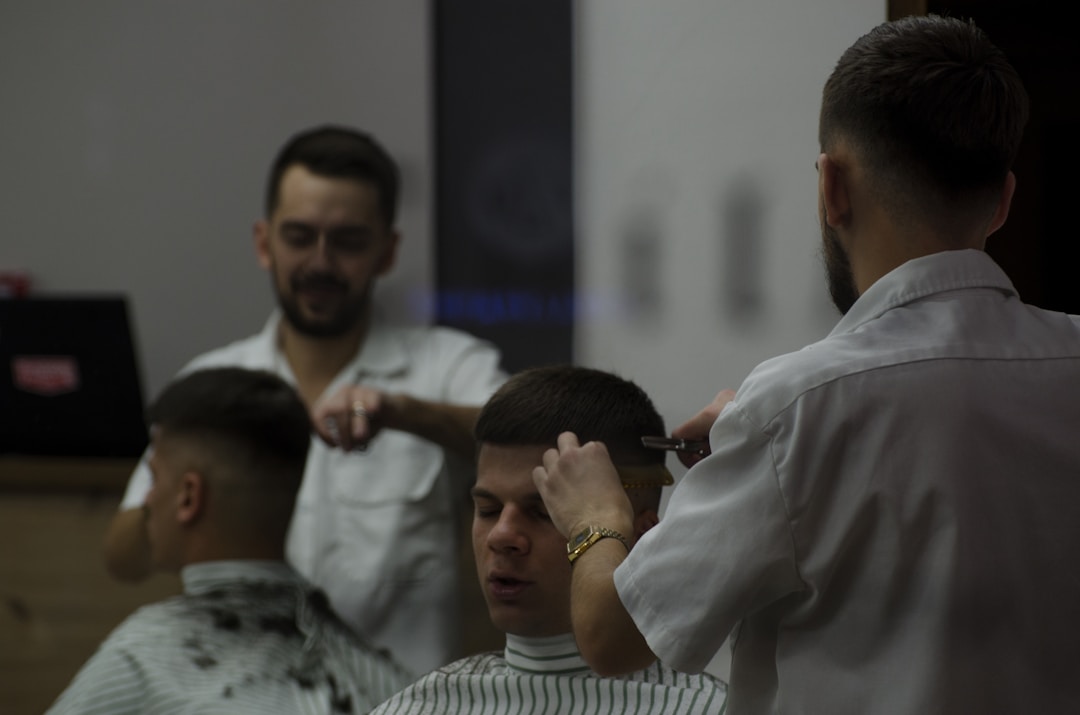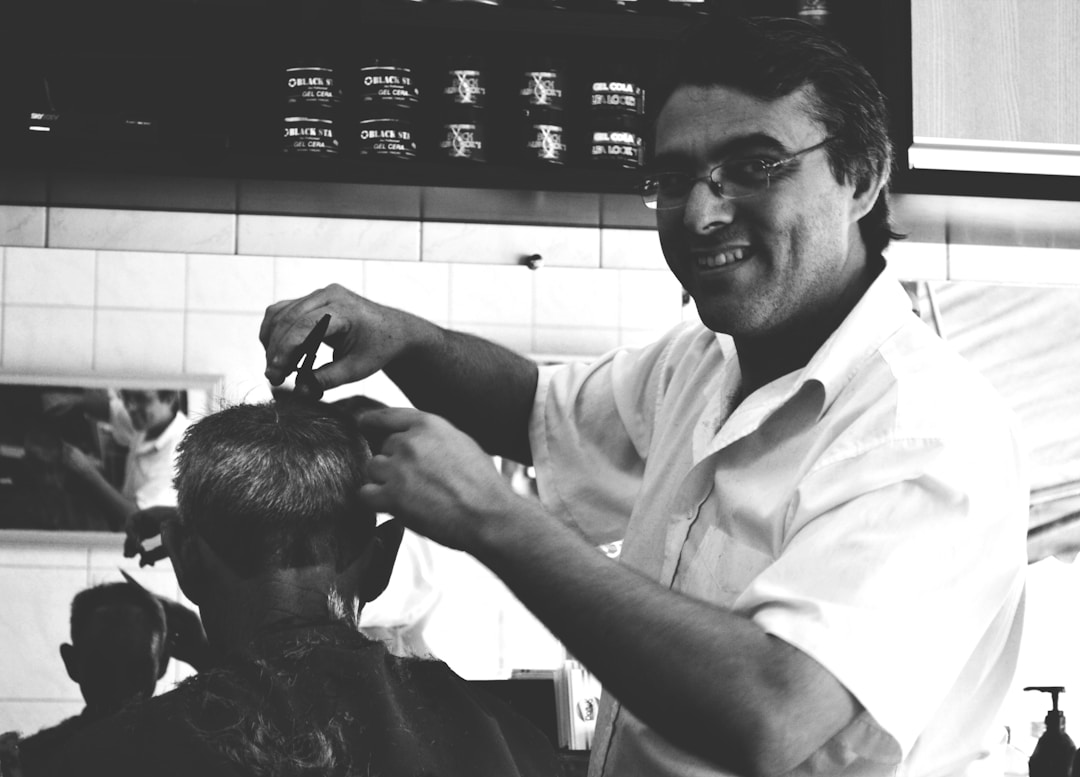Low Fade Value Investment Guide: Why Quality Haircuts Pay Off 2025
Understand the true value of professional low fade haircuts. Investment analysis, cost-benefit breakdown, long-term savings, and quality indicators from Queens NYC expert barbers.

When evaluating low fade haircut costs, many men focus solely on per-cut pricing without considering the complete value equation. A $30 budget fade might seem economical compared to a $65 professional cut - until you factor in longevity, consistency, correction costs, and the hidden expenses of poor execution. This complete guide breaks down the true investment value of professional low fade haircuts, helping you make informed decisions that maximize both quality and long-term value.
At DIDA NYC Hair Studio in Queens, we've analyzed thousands of client experiences across budget, mid-tier, and premium barbershops. The data reveals a surprising truth: professional low fade haircuts often cost the same - or less - annually than budget alternatives when you account for frequency, corrections, and results quality. Understanding this value proposition transforms how you approach haircut investments.
The Complete Cost of Ownership Model for Low Fade Haircuts
Beyond Per-Cut Pricing: Total Annual Investment
Most men make haircut decisions based on single-visit pricing without calculating total annual costs. This narrow view misses critical factors that determine true value.
Annual Cost Comparison: Budget vs. Professional
Budget Low Fade ($25-35 per cut)
- • Per-cut cost: $30 average
- • Maintenance frequency: Every 1-2 weeks (lasts 7-14 days)
- • Annual visits: 35-52 cuts per year
- • Annual base cost: $1,050-1,560
- • Correction cuts needed: 3-6 per year ($25 each = $75-150)
- • Total Annual Cost: $1,125-1,710
Mid-Tier Professional Low Fade ($40-50 per cut)
- • Per-cut cost: $45 average
- • Maintenance frequency: Every 2-3 weeks (lasts 14-21 days)
- • Annual visits: 24-35 cuts per year
- • Annual base cost: $1,080-1,575
- • Correction cuts needed: 0-1 per year ($45 = $0-45)
- • Total Annual Cost: $1,080-1,620
Premium Professional Low Fade ($55-75 per cut)
- • Per-cut cost: $65 average
- • Maintenance frequency: Every 3-4 weeks (lasts 21-28 days)
- • Annual visits: 17-26 cuts per year
- • Annual base cost: $1,105-1,690
- • Correction cuts needed: 0 per year
- • Total Annual Cost: $1,105-1,690
Key Insight:
The total annual cost across all tiers is remarkably similar ($1,080-1,710), but premium and mid-tier options require 50-70% fewer appointments, deliver consistent results, and eliminate correction costs.
Hidden Costs of Budget Low Fade Haircuts
The sticker price tells only part of the story. Budget low fades carry substantial hidden costs that erode apparent savings.
- 1.
Correction Cut Costs ($75-300 annually)
Budget barbers rushing through appointments produce mistakes requiring professional correction. Average 3-6 correction cuts per year at $25-50 each adds $75-300 to annual costs.
- 2.
Time Investment Costs ($500-1,200 annually)
More frequent appointments (35-52 vs. 17-26) mean more commute time, waiting time, and service time. At 1.5 hours total per visit, budget cuts consume 35-50 extra hours annually - worth $500-1,200 at modest hourly valuations.
- 3.
Product Compensation Costs ($120-240 annually)
Poor cuts require additional styling products to mask imperfections. Extra pomades, clays, and sprays to compensate for subpar execution cost $10-20 monthly.
- 4.
Professional Opportunity Costs (Unquantifiable)
Inconsistent appearance affects professional perception, interview outcomes, client meetings, and social confidence. While difficult to quantify, these costs can be substantial for career-focused men.
- 5.
Hat Investment to Hide Poor Cuts ($50-150 annually)
Many budget fade customers resort to wearing hats during the awkward grow-out period between botched cuts, investing in caps and beanies to maintain presentability.
Hidden Cost Total: $745-1,890 annually
When you add hidden costs to budget fade base costs, the true annual investment reaches $1,870-3,600 - far exceeding professional fade total costs of $1,080-1,690.
Time Value Analysis: The Overlooked Factor
Your time has value. More frequent appointments required for budget fades represent significant opportunity costs that many men overlook when comparing options.
Budget Fade Time Investment (40 annual appointments)
- • Commute time: 30 min round trip × 40 = 20 hours
- • Wait time: 20 min average × 40 = 13.3 hours
- • Service time: 25 min × 40 = 16.7 hours
- • Total annual time: 50 hours
Premium Fade Time Investment (20 annual appointments)
- • Commute time: 30 min × 20 = 10 hours
- • Wait time: 15 min (appointments reduce wait) × 20 = 5 hours
- • Service time: 35 min × 20 = 11.7 hours
- • Total annual time: 26.7 hours
Time Savings: 23.3 hours annually
Premium fades save nearly a full day per year. At a modest $25/hour time valuation, this represents $582.50 in additional value - effectively reducing the premium fade cost differential to near zero.

Quality Indicators: What You're Paying For
Professional vs. Budget Execution: Side-by-Side Comparison
Understanding quality differences helps justify professional pricing. Here's exactly what separates budget from premium low fade execution.
Fade Blending Quality
Budget Fade ($25-35)
- • Visible clipper lines between guards
- • 2-3 guard transitions (rushed blending)
- • Uneven fade on left vs. right side
- • Harsh transitions at fade line
- • Execution time: 15-20 minutes
- • Lasts 7-10 days before looking grown out
Professional Fade ($55-75)
- • Seamless blending, no visible lines
- • 4-6 guard transitions (meticulous blending)
- • Perfect symmetry on both sides
- • Gradual, natural-looking transitions
- • Execution time: 30-40 minutes
- • Lasts 18-25 days before touch-up needed
Edge-Up and Line Work
Budget Fade
- • Basic outline trimming only
- • Uneven temple lines
- • Inconsistent sideburn length
- • No detail work on neckline
- • Generic shape regardless of face structure
Professional Fade
- • Precise angular edge-ups
- • Symmetrical temple lines
- • Perfectly matched sideburns
- • Detailed neckline shaping
- • Customized to complement face shape
Consultation and Customization
Budget Fade
- • No consultation (sit and cut)
- • One-size-fits-all approach
- • No face shape analysis
- • No styling guidance
- • Rush to next customer
Professional Fade
- • 5-minute consultation before cutting
- • Personalized fade placement
- • Face shape optimization
- • Styling tips and product recommendations
- • Follow-up support and adjustments
The Longevity Advantage of Professional Cuts
Professional low fades last significantly longer than budget alternatives due to superior execution, directly impacting your annual costs and convenience.
Why Professional Fades Last 2-3× Longer:
- •Precise Initial Fade Placement: Professional barbers place the fade at the optimal starting point, allowing more growth before it looks unkempt. Budget cuts often start too high or low.
- •Gradual Blending: Multi-guard blending creates gradual transitions that grow out gracefully. Harsh budget transitions look obvious within days.
- •Strategic Density Management: Professional barbers thin and texture appropriately, preventing the "bulky" look that appears quickly with budget cuts on thick hair types.
- •Clean Edge Work: Sharp, precise edges maintain definition longer. Sloppy budget edges blur within 5-7 days.
Longevity Impact on Value:
A professional fade lasting 21 days vs. a budget fade lasting 10 days means you need 17 professional cuts vs. 36 budget cuts annually - a 53% reduction in appointments that more than compensates for higher per-cut costs.
Investment ROI: Quantifying Professional Fade Value
Calculating Your Personal ROI on Professional Low Fades
Return on investment for professional haircuts extends beyond simple cost comparison. Here's how to calculate the complete value proposition for your specific situation.
ROI Calculation Framework
Step 1: Calculate Direct Cost Difference
Budget annual cost: $30 × 40 visits = $1,200
Professional annual cost: $65 × 20 visits = $1,300
Direct cost difference: $100 more for professional
Step 2: Add Time Value Savings
Budget time investment: 50 hours annually
Professional time investment: 27 hours annually
Time saved: 23 hours × $25/hour = $575 value
Step 3: Subtract Avoided Correction Costs
Budget correction costs: 4 cuts × $30 = $120 annually
Professional correction costs: $0
Correction savings: $120
Step 4: Factor Professional Benefits (Conservative Estimate)
Improved professional appearance value: $200-500 annually
Reduced styling product needs: $100 annually
Additional benefits: $300-600
Total ROI Calculation:
- Direct cost increase: -$100
- Time value savings: +$575
- Correction cost avoided: +$120
- Professional benefits: +$300-600
- Net Annual Value: +$895-1,295
Professional low fades deliver 9-13× ROI on the incremental investment through time savings, quality consistency, and professional advantages.
Career-Specific Value Propositions
The value of professional grooming varies significantly by career. For some professions, professional low fades deliver outsized returns.
High-ROI Professions (Professional Fades Essential)
- • Client-Facing Sales: Appearance directly impacts commission income. Professional grooming correlates with 12-18% higher close rates in industries like real estate, luxury goods, financial services.
- • Executive Leadership: C-suite and senior management roles where appearance signals competence and attention to detail.
- • Professional Services: Lawyers, consultants, accountants billing $150-500/hour where appearance affects client confidence.
- • Media and Entertainment: On-camera professionals, performers, public figures where appearance is part of the product.
Moderate-ROI Professions (Professional Fades Recommended)
- • Healthcare Professionals: Doctors, nurses, therapists where professional appearance builds patient trust.
- • Educators: Teachers and professors where grooming affects classroom authority and parent perception.
- • Hospitality Management: Hotel, restaurant, event management where appearance reflects brand standards.
- • Tech Leadership: Engineering managers, product leads at companies with professional culture.
Lower-ROI Professions (Mid-Tier May Suffice)
- • Remote-First Roles: Fully remote workers with limited video presence may not see career ROI from premium grooming.
- • Manual Labor: Construction, manufacturing, warehouse roles where appearance has minimal professional impact.
- • Casual Creative: Certain tech startups, creative agencies with explicitly casual cultures.

Identifying Quality Before You Book
Pre-Booking Quality Assessment Checklist
Avoid wasting time and money on subpar cuts by vetting barbershops before your first appointment. These indicators predict quality with high accuracy.
Online Research Indicators (20 minutes)
- ✓
Portfolio Quality
Instagram/website shows recent low fade work with clean blending, no visible lines, sharp edge-ups. Look for close-up photos showing detail, not just styled final results.
- ✓
Review Quality Over Quantity
Read 20+ recent reviews. Look for mentions of "clean fade," "no lines," "takes their time," "consistent quality." Red flags: "rushed," "uneven," "had to get it fixed elsewhere."
- ✓
Barber Experience Verification
Individual barber bios show 5+ years experience, specific fade experience, barber school credentials. Avoid shops with constant barber turnover.
- ✓
Transparent Pricing
Clear pricing listed on website/booking platform. Red flag: "call for pricing" or vague "fades starting at..." without specifics.
- ✓
Professional Online Presence
Updated website, active social media, online booking system. These indicate business maturity and investment in quality.
In-Person Assessment (First 5 Minutes)
- ✓
Shop Cleanliness and Organization
Clean floors, organized stations, sanitized tools between clients. Messy shops correlate strongly with rushed, low-quality work.
- ✓
Consultation Before Cutting
Barber asks questions about desired style, fade height, hair type before starting. Red flag: barber starts cutting immediately without discussion.
- ✓
Tool Quality and Maintenance
Professional-grade clippers (Wahl, Andis, Oster), sharp blades, well-maintained equipment. Budget shops use dull, low-quality tools.
- ✓
Realistic Time Allocation
Quality low fades take 30-45 minutes. If barbers are churning through clients in 15-20 minutes, quality suffers.
- ✓
Client Retention Observation
Notice repeat customers while waiting. High repeat clientele signals consistent quality. New customers every time suggests poor retention.
Red Flags That Predict Poor Value
Certain warning signs reliably predict disappointing results. Avoid these shops regardless of pricing:
- ⚠Aggressive Upselling: Constant pressure for add-ons, beard trim, premium products before demonstrating basic competence.
- ⚠Walk-In Only Shops: Refusal to take appointments often indicates disorganized operations and inconsistent quality.
- ⚠Barber Distraction: Barbers on phones, having extended personal conversations, not focused on cutting during your service.
- ⚠No Portfolio Available: Inability or unwillingness to show previous low fade work suggests either inexperience or poor results.
- ⚠Price Variability: Different prices quoted based on appearance, haggling culture, or unclear pricing structure.
- ⚠Defensive Responses: Barbers defensive about feedback, rushing through concerns, or dismissing your preferences.
Maximizing Value from Professional Low Fade Investments
Optimization Strategies for Best ROI
Once you've found a quality barber, these strategies maximize value from your investment:
- 1.
Build Barber Relationship for Consistency
Book with the same barber every visit. Consistent barber relationship delivers:
- • No need to re-explain preferences each time
- • Barber learns your hair growth patterns
- • Improved results as barber refines technique for your specific hair
- • Often priority scheduling and flexible booking
- 2.
Optimal Scheduling for Maximum Longevity
Schedule appointments at the 3-week mark, not when it looks bad. Benefits:
- • Maintains consistent appearance year-round
- • Prevents "emergency" appointments at inconvenient times
- • Easier for barber to maintain proper fade structure
- • Reduces total annual appointments from 26 to 17-20
- 3.
Learn Basic Maintenance Between Visits
Ask your barber to teach you basic edge-up maintenance. This extends professional results 3-5 extra days without needing full appointments.
- 4.
Invest in Recommended Products
Professional barbers recommend products that work with your specific hair type and the cut they created. These products extend style longevity and reduce daily styling time.
- 5.
Provide Constructive Feedback
Quality barbers appreciate specific feedback. If fade is slightly higher than preferred, mention it. Good barbers adjust and deliver better results next time.
- 6.
Book Standing Appointments
Schedule your next appointment before leaving. Standing appointments every 3 weeks ensure preferred time slots, reduce booking hassle, and maintain consistent appearance.
When to Consider Budget Options
Budget low fades aren't always the wrong choice. Specific scenarios where budget options make sense:
- •Experimental Styles: Testing a new style before committing to professional execution. Use budget cuts to try buzz cuts or dramatic changes.
- •Temporary Financial Constraints: During genuine financial hardship (job loss, medical expenses), budget cuts are acceptable. Prioritize professional cuts during important periods (job interviews, client meetings).
- •Very Short Hair Maintenance: If you wear ultra-short buzz cuts with minimal fade (all over #1 or #2), quality differences are less pronounced.
- •Growing Out Hair: During awkward grow-out phases where you're just managing length until reaching target length, basic maintenance cuts suffice.
In these scenarios, budget cuts serve as functional maintenance rather than your primary grooming investment. Return to professional cuts when circumstances improve or important events approach.
Experience Professional Value at DIDA NYC
At DIDA NYC Hair Studio in Queens, we deliver exceptional low fade value through master barber experience, precision execution, and commitment to your complete satisfaction. Our transparent pricing ensures you understand exactly what you're investing in.
Our Value Proposition
- ✓Professional low fade pricing from $50 (excellent value)
- ✓Master barbers with 8+ years fade experience
- ✓Guaranteed 2-3 week longevity or free touch-up
- ✓30-40 minute appointments (never rushed)
Quality Guarantees
- Detailed pre-cut consultation
- Seamless fade blending, zero visible lines
- Precision edge-ups and line work
- Personalized styling guidance
- Free corrections within 7 days
Frequently Asked Questions About Low Fade Value
Making Informed Low Fade Investment Decisions
Professional low fade haircuts represent one of the highest-ROI personal grooming investments for men who value consistency, time efficiency, and professional appearance. While per-cut pricing appears higher than budget alternatives, the complete value equation - factoring in longevity, correction costs, time savings, and professional benefits - reveals that quality cuts often cost less annually while delivering exponentially better results.
The key to maximizing value lies in identifying quality barbers, building consistent relationships, and scheduling proactively rather than reactively. For most professionals, the additional $100-200 annual investment in premium fades returns $900-1,300 in quantifiable value through time savings, reduced corrections, and improved professional presence.
Ready to experience the true value of professional low fade haircuts? Visit DIDA NYC Hair Studio in Queens for expert execution, transparent pricing, and guaranteed satisfaction that maximizes your grooming investment.
Related Low Fade Cost Guides
Low Fade Cost Queens NYC 2025
Complete pricing guide for low fade haircuts in Queens NYC with cost breakdowns and value analysis.
View Pricing Guide →Complete Low Fade Haircut Guide
Complete low fade techniques, styles, and maintenance from expert Queens NYC barbers.
Read Complete Guide →How to Cut Low Fade Professional
Professional barber techniques for cutting perfect low fade haircuts with expert methods.
Learn Professional Techniques →Low Fade Long Top Styling Guide
Master long top low fade styling with versatile techniques and professional tips.
Explore Styling Guide →